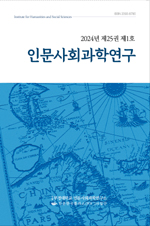- 영문명
- A Comparative Study on the Perception and Use of Auxiliary Verb Constructions in Korean and Kyrgyz : The Case of ‘-eo beorida’ and ‘-eo boda’
- 발행기관
- 부경대학교 인문사회과학연구소
- 저자명
- 최정희(Junghee Choi) 김정미(Jungmi Kim)
- 간행물 정보
- 『인문사회과학연구』제26권 제3호, 265~290쪽, 전체 26쪽
- 주제분류
- 사회과학 > 사회과학일반
- 파일형태
- 발행일자
- 2025.08.31

국문 초록
본 연구는 한국어 보조동사 ‘-어 버리다’와 ‘-어 보다’에 대한 키르기스인 한국어 학습자의 인식 및 사용 양상을 분석하고, 이를 바탕으로 효과적인 교육적 접근 방안을 제시하는 데 목적이 있다. 이를 위해 두 보조동사의 문법적 특성과 통사적 결합 양상, 상적·양태적 의미 기능을 이론적으로 고찰하고, 이에 상응하는 키르기스어 표현 ‘-p taşta’, ‘-p kör’과의 대조를 통해 언어 간 상응 양상을 분석하였다. 또한 중급 이상 한국어 학습자를 대상으로 설문조사를 실시하고 응답 결과를 분석하여 의미 이해, 사용 실태, 오류 유형을 파악하였다.
분석 결과 첫째, 학습자들은 두 보조동사의 기본 의미는 대체로 잘 이해하고 있었으나, 문맥에 따른 의미 변화 및 감정적·화용적 기능에 대해서는 혼란을 보였다. 특히 ‘-어 버리다’의 경우 주로 동작 완료 의미로 인식되었으며 후회, 안도, 감정 폭발 등 정서적 의미나 의도성 구분은 명확히 파악되지 않았다. ‘-어 보다’는 시도와 경험의 주요 의미는 인식하고 있었으나 권유, 가능성, 반복 시도 등 맥락적 의미 확장에는 취약하였다. 둘째, ‘-어 버리다’에 상응하는 ‘-p taşta’는 동작의 완료를 나타내는 기능에서는 유사성이 있었으나 감정적 함의나 담화적 기능에서는 차이를 드러냈다. ‘-어 보다’와 유사한 ‘-p kör’는 주로 직접 명령이나 권유의 의미로 사용되며, 경험적 의미는 맥락과 구조에 따라 해석이 달라지는 경향이 있었다. 이로 인해 학습자들은 보조동사를 생략하거나 문맥에 부적절한 표현을 사용하는 경향을 보였다. 셋째, 문법성 판단 및 선다형 문항에서 키르기스인 학습자의 정답률은 한국어 모어 화자보다 낮았으며, 문법적 정확성보다는 어휘 유사성이나 모국어 직역에 의존하는 경향이 나타났다. 서술형 및 번역형 문항에서도 본동사만을 사용하거나 보조동사를 생략하여 의미 전달이 불완전한 응답이 다수 나타났다. 이러한 결과는 보조동사가 단순한 문법 형식이 아닌 복합적 의미와 담화 기능을 지닌 표현임을 보여주며, 학습자의 의미 이해와 표현 능력의 균형을 고려한 체계적인 교육적 접근이 필요함을 시사한다.
영문 초록
This study examines the perception and use of the Korean auxiliary verb constructions ‘-eo boda’ and ‘-eo beorida’ among Kyrgyz learners of Korean, with the goal of suggesting effective pedagogical strategies. The study first analyzes the grammatical properties, syntactic constraints, and aspectual-modal meanings of the two constructions. Through contrastive analysis with their Kyrgyz equivalents, ‘-p kör’ and ‘-p taşta’ cross-linguistic similarities and differences were identified.
A survey was conducted with intermediate and advanced Kyrgyz learners of Korean. Their responses to multiple-choice, grammaticality judgment, and open-ended translation tasks were analyzed to evaluate their comprehension, usage patterns, and error types.
The results indicate that while learners grasped the core meanings of both constructions, they encountered difficulties in interpreting pragmatic and affective nuances. For instance, ‘-eo boda’ was generally understood in terms of 'attempt' and 'experience', but its extended functions such as suggestion, hypotheticality, and repetition were often overlooked. Similarly, ‘-eo beorida’ was interpreted primarily as marking completion, with less attention paid to its affective connotations and agentive implications.
In comparison, ‘-p kör’ in Kyrgyz primarily expresses direct suggestion or command, with contextual variation in experiential meaning. ‘-p taşta’, while similar to ‘-eo beorida’ in denoting completion, differs in emotional and discourse-related functions. Learners frequently omitted auxiliary verbs or produced contextually inappropriate expressions.
The findings underscore the semantic, pragmatic, and discourse-level complexities involved in acquiring Korean auxiliary verbs. A more systematic, context-based instructional approach is therefore recommended to enhance both comprehension and production accuracy among Kyrgyz learners.
목차
Ⅰ. 서론
Ⅱ. 보조동사의 의미 기능 비교
Ⅲ. 연구 방법 및 내용
Ⅳ. 연구 결과
Ⅴ. 결론
참고문헌
키워드
해당간행물 수록 논문
참고문헌
최근 이용한 논문
교보eBook 첫 방문을 환영 합니다!

신규가입 혜택 지급이 완료 되었습니다.
바로 사용 가능한 교보e캐시 1,000원 (유효기간 7일)
지금 바로 교보eBook의 다양한 콘텐츠를 이용해 보세요!



